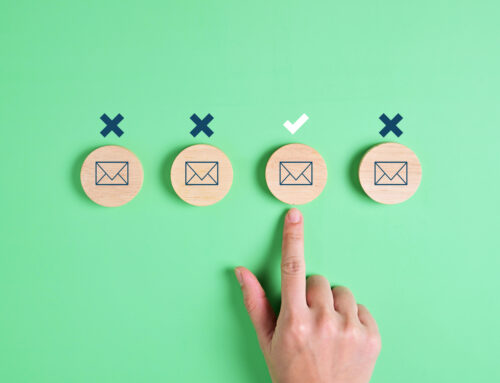When I teach newsletter classes, I always like to show examples of good newsletters as well as examples of ones that have big problems. The most glaring errors, because they are so easy to see, are those involving photos. Here are a few newsletter photo horrors you’ll want to avoid.
Photos at the wrong resolution. Print newsletters need photos with at least 300 dpi at the correct size. Online newsletters need photos at 72 ppi at the correct size. That’s a big difference and it means you can’t use the same file for both print and online newsletters. If you put an online version into a print newsletter, it will look pixelated (you can see the little boxes in the photo) or blurry. If you put a print version into an e-newsletter, it will be way too big or take too long to download, depending on how the photo is rendered by the program reading your newsletter.
The Solution: If I am using a photo for both a print and email newsletter, I’ll end up with three versions of the file: the original, which I always keep as is; a print version that I have resized when set to 300 dpi; and an online version that I have resized when set at 72 ppi.
Photos that make people look bad. Unless you are specifically trying to humiliate someone, you want to make sure that the photos you include in your newsletter make the people in them look good.
In my pile of bad examples is a newsletter by an organization that works with disabled adults. It includes a photo of a disfigured woman. This is not bad in and of itself. What’s horrible is that the photo is clearly vertically skewed, so the woman’s face is much more long and narrow than it should be, making her look really bad. I suspect the person who designed the newsletter was trying to fill up some space and dragged the corner of the photo down without also dragging it across horizontally.
The Solution: Make sure you keep your ratio of horizontal to vertical constant. Depending on the program you are using, you’ll usually want to hold down the shift or control key when resizing photos.
Photos that are the wrong color. You also want to avoid printing your newsletter in certain colors if you use lots of people photos. People pictures generally look horrible when printed in bright pink, yellow, orange, or red for example.
The Solution: If you print your newsletter in one or two colors only, pick a color that will make people photos look good. These are generally darker colors, like dark blue or purple, for example, that produce a look that is closer to the black and white we are all used to.
If you are interested in more common newsletter mistakes involving more than just photos, sign up for my free 5-day e-course, “Avoid These Five Newsletter Blunders.”





